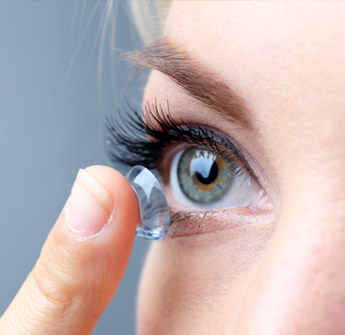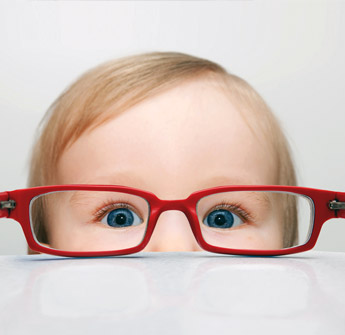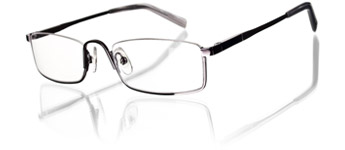Fascinating eye facts
The human eye is a marvel of nature, as well as being one of the body’s most complex organs.
These are some of the remarkable things you may not know about your eyes...

The debate earlier this year over the much publicised ‘dressgate’ image that went viral on social media demonstrated how differently an object can be perceived. Some people saw white and gold, while others saw the blue and black shades that were originally chosen by the manufacturer. The human eye can distinguish between ten million colours, but it’s often hard to accept that other people see colours differently to the way we do.
The phrase “in the blink of an eye” was inspired by the fact that our eyelids are the fastest-moving muscle in the human body. An eyelid is capable of blinking five times every second, although we typically blink once every five seconds.
“Many eye-related conditions and diseases can be prevented by making healthy lifestyle choices.”
While most people can interpret millions of different shades, almost 10 per cent of men are partly colour-blind because of a gene that’s primarily found in the male X chromosome. Colour blindness was first identified in a 1793 paper titled ‘Extraordinary Facts relating to the Vision of Colours’ by scientist John Dalton.
Blue-eyed people enjoy a higher tolerance to alcohol. University of Pittsburgh research recently discovered that higher melanin levels (the pigment that makes eyes darker) can lower alcohol tolerance. It’s believed that the first blue eyed person lived near the Black Sea coast thousands of years ago and every blue eyed person today shares this ancestry.
Life through a lens

It’s remarkable to consider how far contact lenses have advanced in recent decades.
Modern lenses can be matched to almost any prescription strength, using lightweight materials that are so comfortable it’s easy to forget about them once they’re inserted.
Indeed, today’s daily disposable lenses have virtually eliminated the tradition of building up wearing time – inserting and wearing lenses for longer periods every day while your eyes adapt to their presence.
Recent design and manufacturing advances have made contact lenses suitable for people with conditions like dry eyes or astigmatism, enabling them to enjoy crystal-clear vision without glasses for the first time/
Patients over the age of 50 are increasingly choosing multifocal contacts, which work across a wide variety of distances.
“Lenses can be matched to almost any prescription strength, using lightweight materials that are so comfortable.”
Unless you opt for single-use daily disposables, contact lenses can require a degree of maintenance. We will explain these simple steps, as well as discussing the different makes and characteristics of lenses currently available and also teach you straightforward techniques for handling lenses, helping to make the process of application and removal second nature.
Did you know? The first recorded mention of contact lenses has been attributed to Leonardo da Vinci in the early 16th century, while Georgian “contact lenses” involved water-filled glass tubes with tiny lenses at one end.
A very sensitive issue

Also known as photophobia, light sensitivity is a condition where people experience discomfort or intolerance in the presence of bright light. Although powerful lamps and bright sunshine can be particularly problematic, light sensitivity can be a symptom of an underlying problem.
Our eyes are sensitive organs, and a sense of being exposed to bright lights can trigger headaches and nausea alongside the natural reactions of squinting or shielding the eyes.
Light sensitivity can occur because of dry eyes or corneal inflammation and new medication can sometimes induce light
sensitivity, as can certain conditions like cataracts or conjunctivitis.

Symptoms may be alleviated with wide-brimmed hats that block out sunlight, or wraparound sunglasses with UV protection that provide full eye cover.
Photochromic lenses adjust their tint according to ambient light conditions, and polarised lenses are excellent at blocking glare from wet or reflective surfaces. We can also explain the benefits of all types of coatings and tints.
Did you know? People with lighter coloured eyes may be more prone to light sensitivity. Darker irises contain greater levels of melanin, which protects against harsh lighting.
Action (work) stations
Fifty years ago, our working lives generally involved some sort of physical activity.
By contrast, many modern careers are office-based and rely heavily on electronic devices. The human body simply wasn’t designed
for computer screens.

These unnatural environments can induce a variety of minor sight-related issues. These typically range from eye strain and
dryness caused by ongoing computer use, through to headaches and fatigue triggered by the subliminal blue light emitted by modern display devices.
Enjoying a healthy working environment requires cooperation from employers. Indeed, they have a duty of care to provide safe and optimised working conditions wherever possible. However, a few personal steps can also improve your wellbeing and eye health:
Optimise posture. To minimise any risk of strains or headaches, acquire a well-padded chair with adjustable height and lumbar support.
Experiment with the relative positions of your desk, chair, keyboard and monitor until you find a good balance.
Use equipment properly. Screens should be kept clean, eliminating any need to squint through a layer of accumulated dust or fingerprints that could induce tiredness or eye strain.
Larger monitors are easier to view than smaller ones, while display settings can be fine-tuned; turn down the brightness and increase font sizes if necessary.
“Take regular breaks, focusing your eyes on distant objects for a moment so the eye muscles can relax. Try to blink frequently, or apply eye drops a couple of times a day to maintain lubrication of the corneal surface.”
Take breaks. Some people notice their vision deteriorates during the day as their eyes tire, so don’t spend hours staring fixedly at a screen.
Take regular breaks, focusing your eyes on distant objects for a moment so the eye muscles can relax. Try to blink frequently, or apply eye drops a couple of times a day to maintain lubrication of the corneal surface. We can advise on what would be best for you.
Prescription strength. Your eyes will operate very differently when using a computer compared to driving or participating in sporting activities. Appropriately prescribed enhanced reading lenses may be necessary for some intermediate activities such as typing etc.
These become increasingly necessary, as our accommodation (ability to focus close up) decreases with age. If you would like any advice or more information on this topic please make an appointment and we’ll be happy to help.
Specialist coatings. Many lenses now have specialised ‘coatings’ incorporated as an integral part of the lens, making them more effective and longer lasting.
Anti-reflective lens coatings are now particularly beneficial in modern offices, and a pair of work glasses could be just as well-suited to reading the paper and browsing the internet at the weekend as they are to making your work tasks clear and comfortable through the week
Did you know? Cathode-ray computer monitors were pioneered in the early 1960s, although it took almost two decades before standard office equipment could display colours and graphics.
Through a child’s eyes

A remarkable amount of eye development takes place during the first year of our lives, as we learn to focus and coordinate our vision. However, childhood is another crucial period for developing strong and effective eyesight.
Toddlers are constantly fine-tuning their visual skills to improve depth perception, tracking abilities and focus. Reading and writing places new demands on a child’s vision, and sporting activities are great for improving spatial awareness and hand-eye coordination. By the age of five, sight is the dominant sense in almost every activity we undertake.
As we grow up, skills like tracking and focus continue to develop as nerve connections multiply and eye muscles strengthen.
“It’s estimated a quarter of school-age children have a degree of vision problem.”
However it’s estimated a quarter of school-age children have a degree of vision problem, with mild far-sightedness in earlier years often giving way to short-sightedness among teenagers. These issues can usually be counterbalanced by wearing glasses.
It’s crucial for children of all ages to have regular sight tests, and eye examinations should become as routine as visiting the dentist. Every child under the age of 18 and in full-time education in the UK is entitled to a free NHS sight test, and our expert staff can ensure everything is functioning normally.
Children assume that everyone sees the world like they do, so they’re unlikely to realise something isn’t quite right with their vision.
Did you know? It’s not always easy to tell if a child’s eyesight is below standard. A sight test is essential to give them the best start.
Frame by frameless

Spectacles have progressed a long way from the limited range of styles and colours of yesteryear. Today’s rimless glasses represent a practical and highly appealing alternative to contemporary frames, with thin lenses mounted directly onto the nose bridge and/or the sides.
The advantage of rimless glasses involves their lightweight design which despite their appearance makes them exceptionally strong.
Titanium frames and polycarbonate lenses ensure minimal pressure is placed on the nose, making it easy to forget you’re wearing glasses at all.
Style is another major benefit – clear lenses without surrounds have a negligible impact on your appearance, allowing natural features like cheekbones and eyebrows to take centre stage.
Frameless glasses are suitable for a wide range of prescriptions and even some stronger lens powers can look good in this type of frame as long as the overall size is kept to a minimum.

We can give an expert opinion on what will work best for you, semi-rimless frames are also available offering another dimension of ‘minimalist’ styling.
Did you know? Early examples of rimless vision correction include monocles and pince-nez-side-free spectacles held in place by pinching the bridge of the nose.







